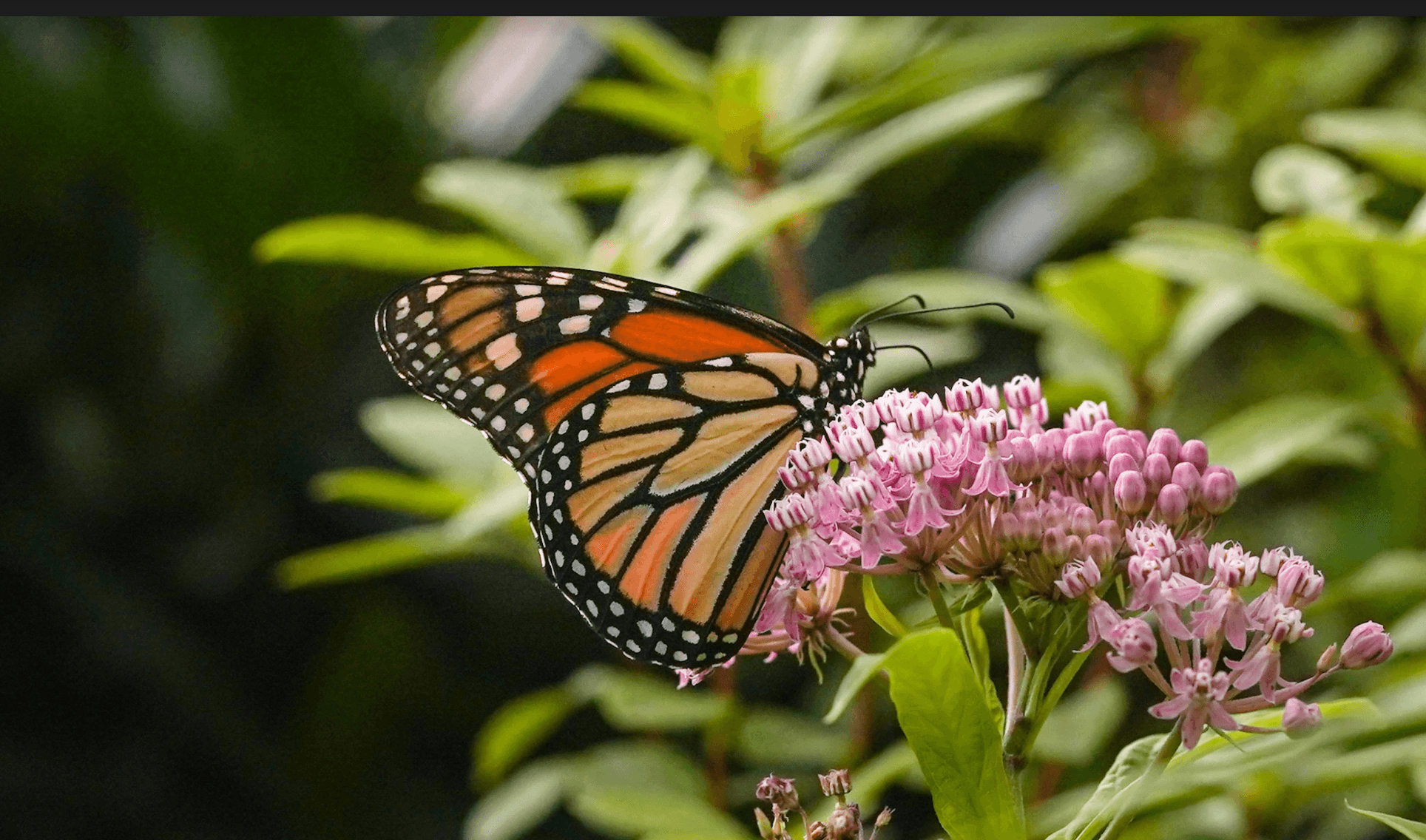This site uses cookies – Learn more.
Winter is Here Again. Where Are the Animals?
Winter is Here Again. Where Are the Animals?
Despite the holiday lights and decorations, New York City winters can sometimes feel dark and dull. One of the reasons for this is due to a lack of colorful blooms. As the weather gets colder, a majority of flowers disappear and won’t begin to bloom again until springtime, and most trees have dropped all of their colorful leaves. With the loss of so much color and life, one might wonder, how does the park’s wildlife survive when so much of the food and shelter provided by our green space is gone?
Using the mobile app iNaturalist, our team monitors the species living in Madison Square Park to better understand how different species respond to shorter and colder days. Here are some of the ways our favorite wildlife survive the winter.
Migration
Many of the park’s birds and a few butterfly species cannot sustain themselves throughout New York City’s winter and migrate to warmer locations where adequate food sources, habitats, and conditions to mate are ensured.
These trips can be long. It takes Monarch butterflies six to eight months to travel from New York City to the mountains of Central Mexico where they spend the winter. Monarchs depend on each other for warmth during their trip. At times during their journey, thousands of butterflies will cluster together on trees.
Since monarchs typically only live for two to six weeks, the monarch’s journey back north takes place over generations. The butterflies will lay eggs on milkweeds along the way. Once they transform into butterflies, they will continue their trip north. It is only the last generation of monarchs, those that make the southern migration, who live longer lives, up to 9 months.
Hibernation
Some animals spend their winter in a sleep-like state known as torpor to conserve energy when food sources are scarce. Hibernation also protects species from predators who may be easily detectable when their warm-weather shelter disappears for winter.
Hibernating animals will decrease their heart rate and temperature, slowing down their entire bodies for weeks. Many wake up intermittently to eat food they stored before their rest, or to ensure that their bodies are responsive enough to fight diseases. The animals will emerge from hibernation when food sources become more readily available.
We often think of bears and bats when we think of hibernating species. But did you know bees hibernate too?
Over the winter months, eastern carpenter bees will nest with their sisters in small wood burrows dug by their mothers and sisters. These nests can be very elaborate and socially complex. Multiple generations of related carpenter bees can live in a single nest if there is enough space. In the nest, the bees will assess their resources and establish roles, helping one another survive the winter.
Caching Food
Many of the park’s species are able to survive winter in Madison Square Park without hibernating. Eastern gray-squirrels prepare for winter by bulking up and hiding seeds, nuts, and berries all around the park.
In the Fall, squirrels will begin to consume more food than normal to put on weight. Staying warm requires energy and these extra layers of fat act as reserves when squirrels strike out during their forages. As temperatures drop, these extra plump squirrels will also share dens and share body heat. Imagine a bunch of warm, chubby squirrels packed together in a hollow tree!
Because food is so vital to their survival in winter, squirrels have developed interesting habits to feed themselves in winter. Squirrels will store their food in small burrows and rely on their memory and markers to remember their stashes in winter. Some more resourceful squirrels will sit back and spy on the more industrious squirrels building their stockpile. Once the squirrel has buried its riches, the spy will come out of hiding, dig out the food and run away with the loot. The more clever and experienced squirrels know this, so they will then pretend to dig their nuts and seed to throw off the thieves. Once in a while, they will forget their hiding places and find themselves incredibly confused when a plant is growing in place of their delicious treat. The food that they do rediscover is vital to their survival in winter when food is less abundant.
Let’s Help The Wildlife
While we can’t control the seasons, we can help the park’s species survive the winter.
Throughout the year, you can use the iNaturalist app to help us track food sources and shelters that occur naturally.
We can plan for springtime to ensure the park has adequate habitats and food sources for migrating species returning to the park, and we can also protect wintertime food sources. We plant chokeberries, blueberries, witch hazel, and other bushes with protein-filled nuts to feed squirrels, and year-round resident birds like Blue Jays, Yellow-bellied Sapsuckers, and Red-bellied Woodpeckers. We also maintain Holly, a great shelter in the wintertime.
Help us protect the park’s wildlife by using iNaturalist this winter to help our team monitor the health of the species living in the park, and ensure that we keep our wild friends happy and healthy year-round.








